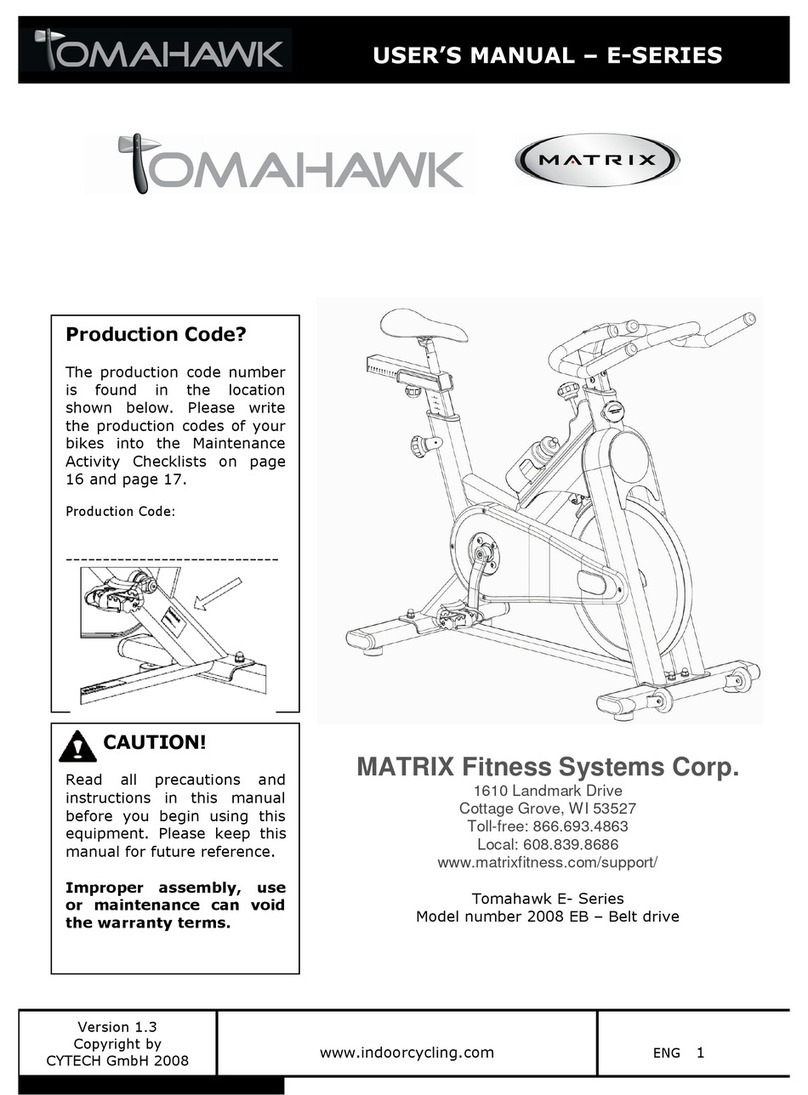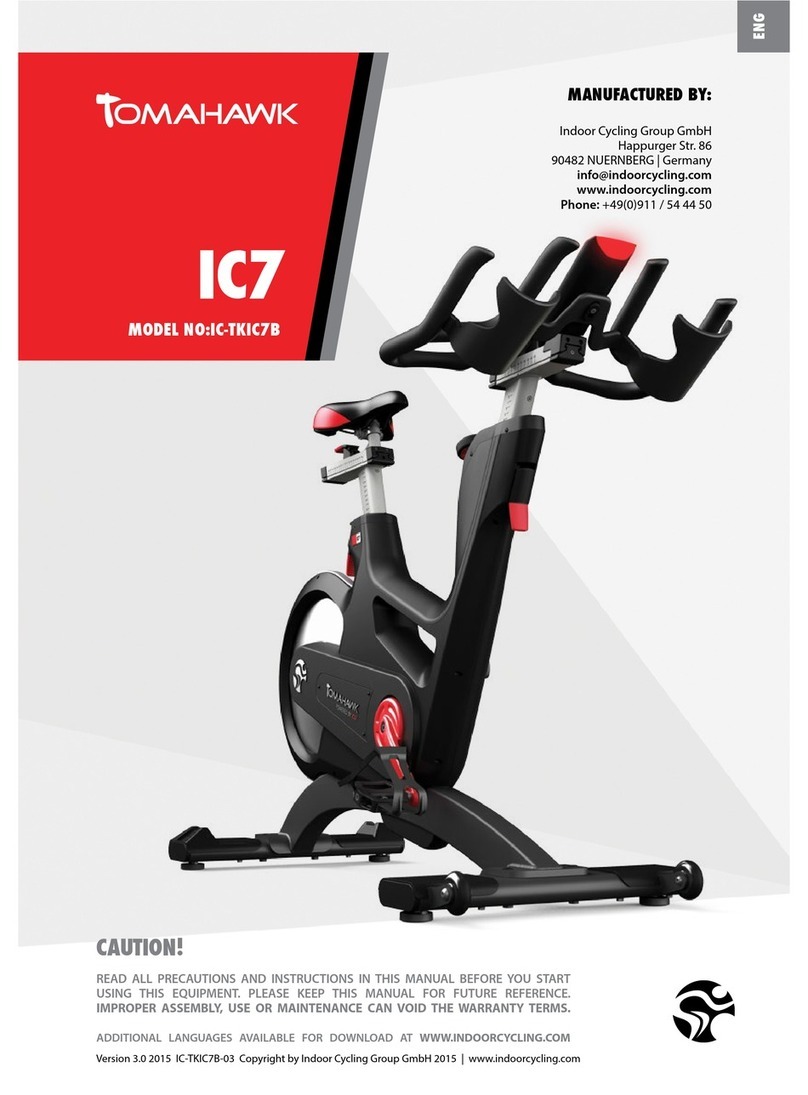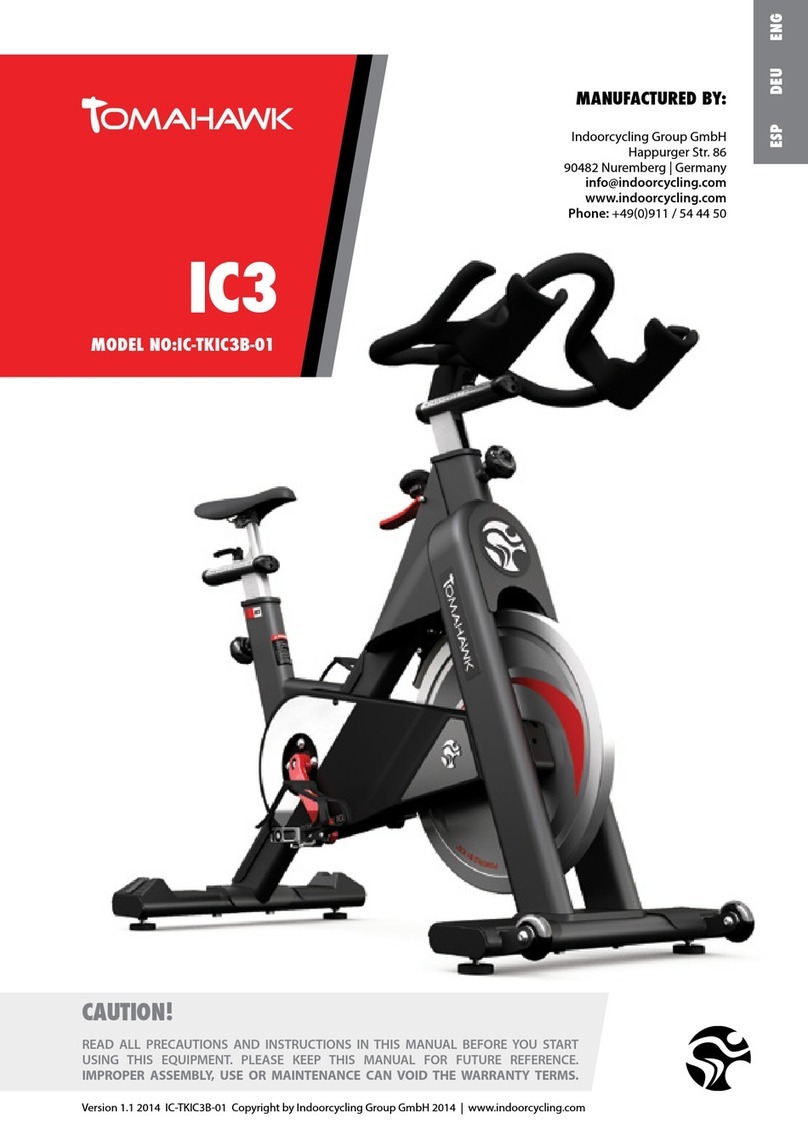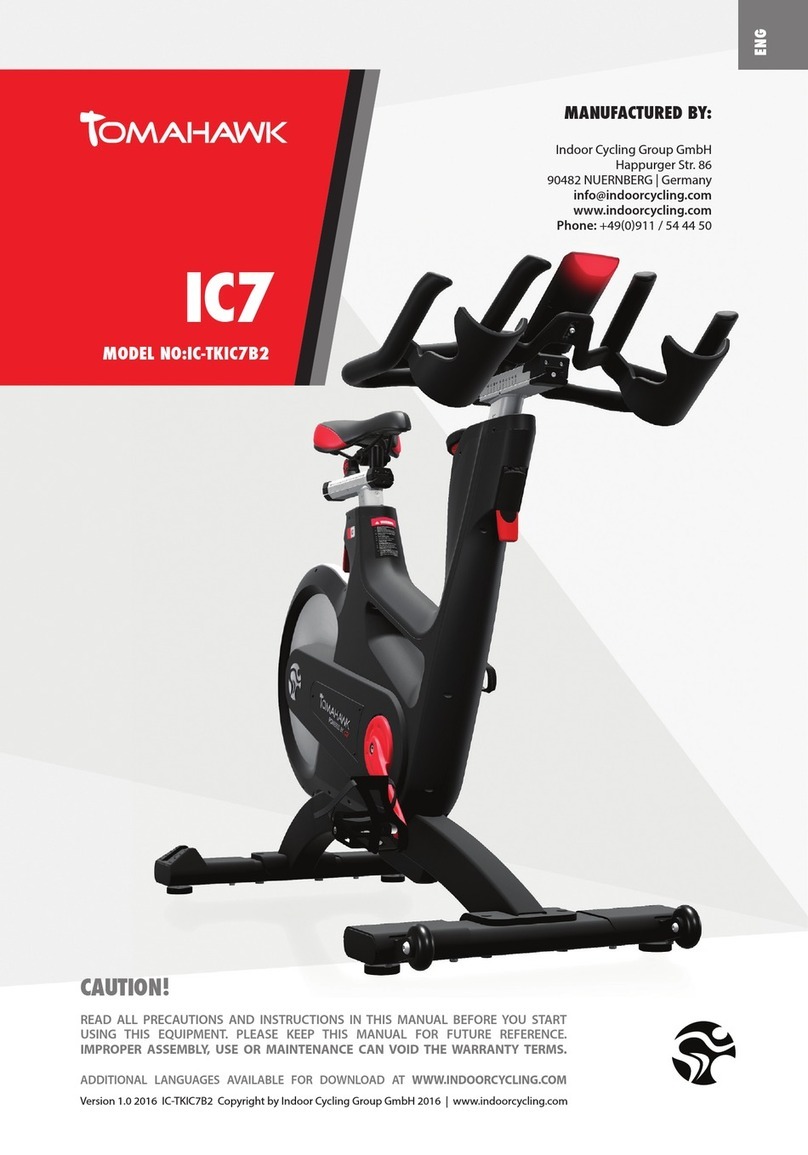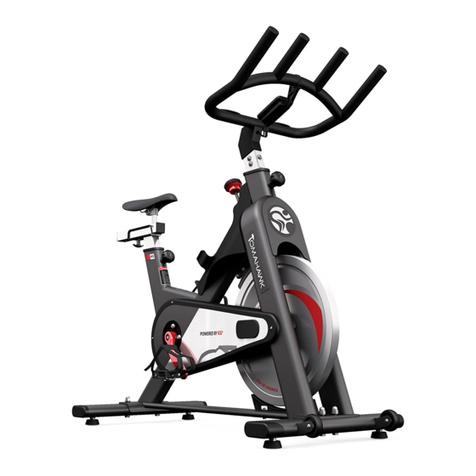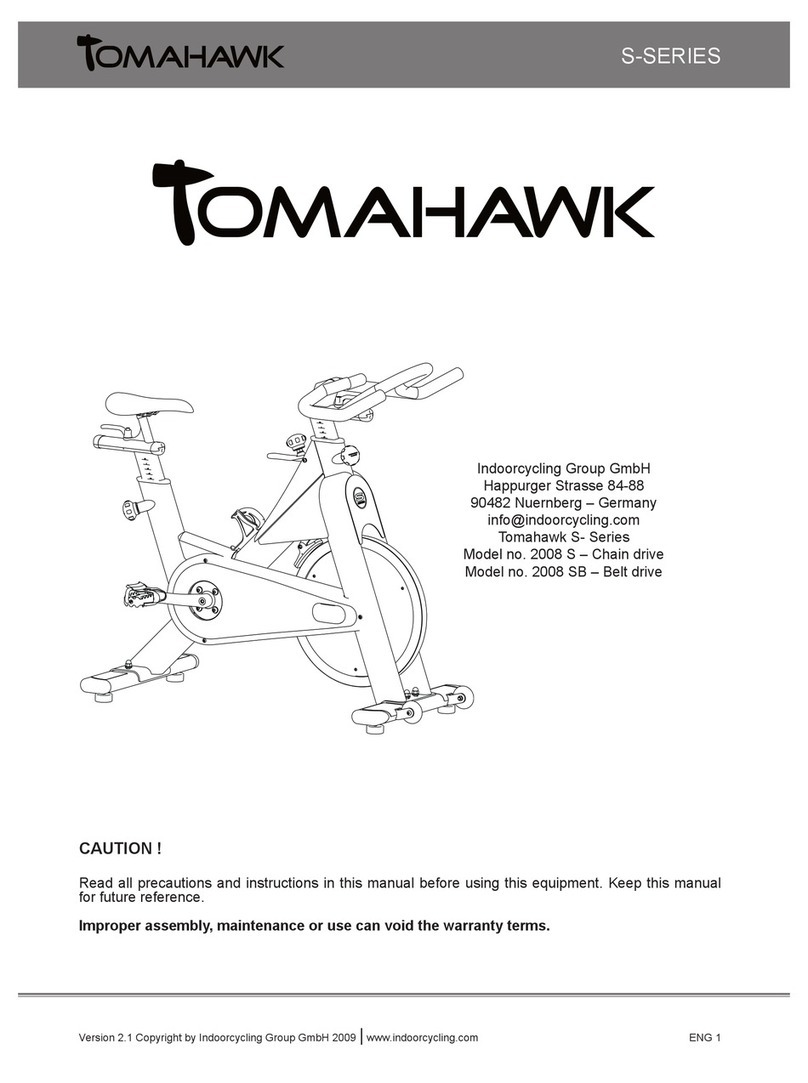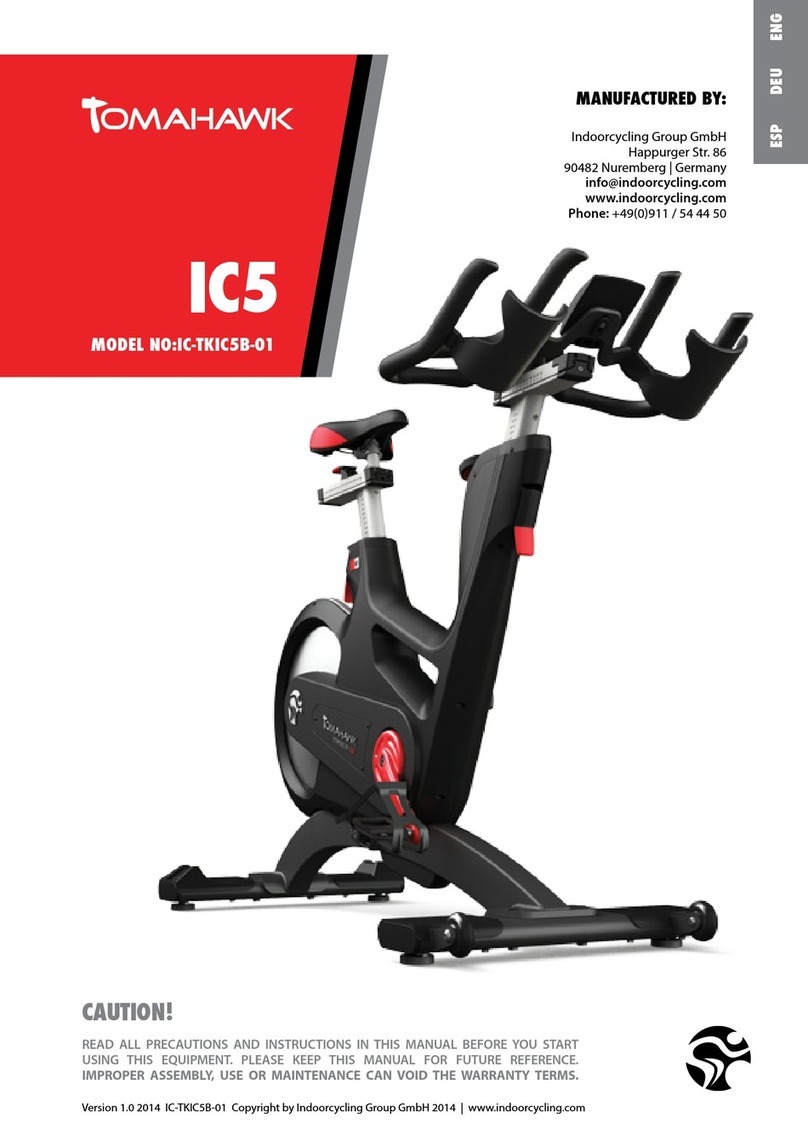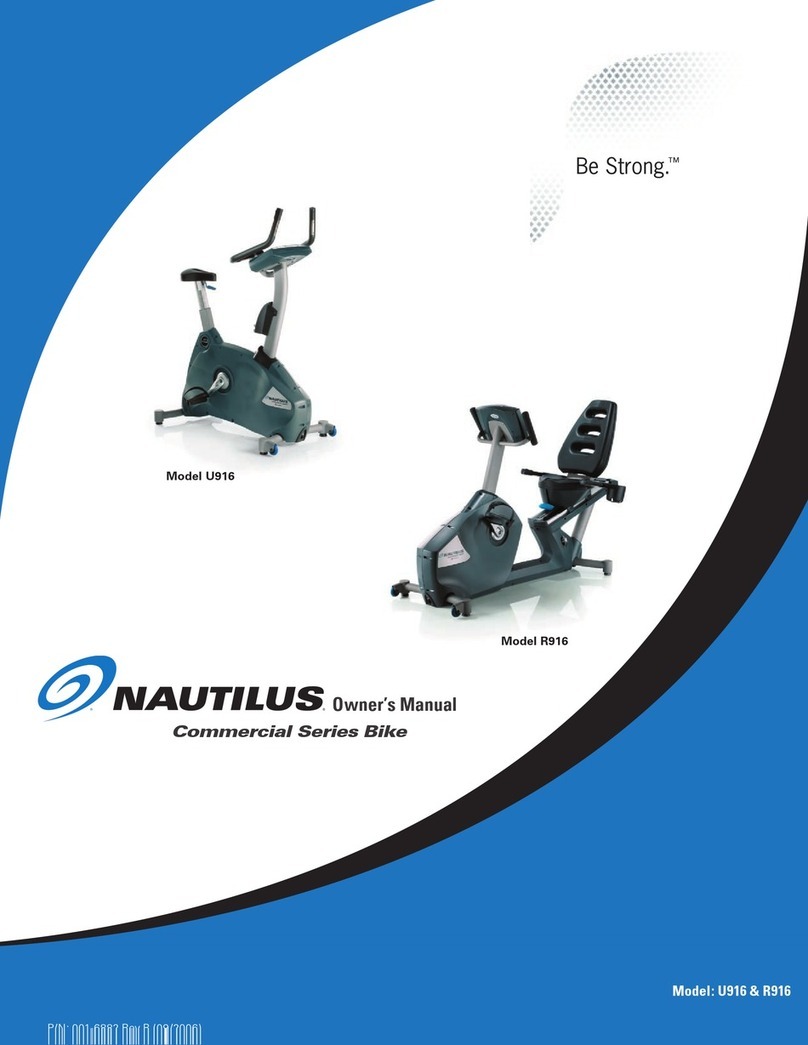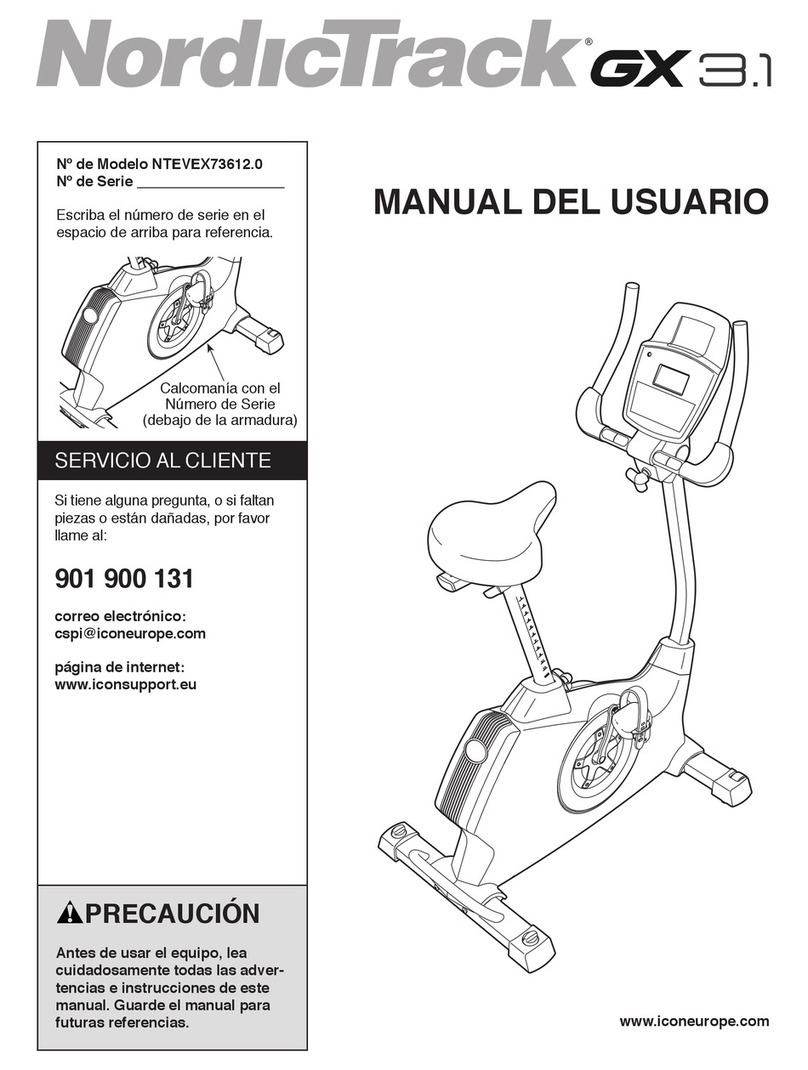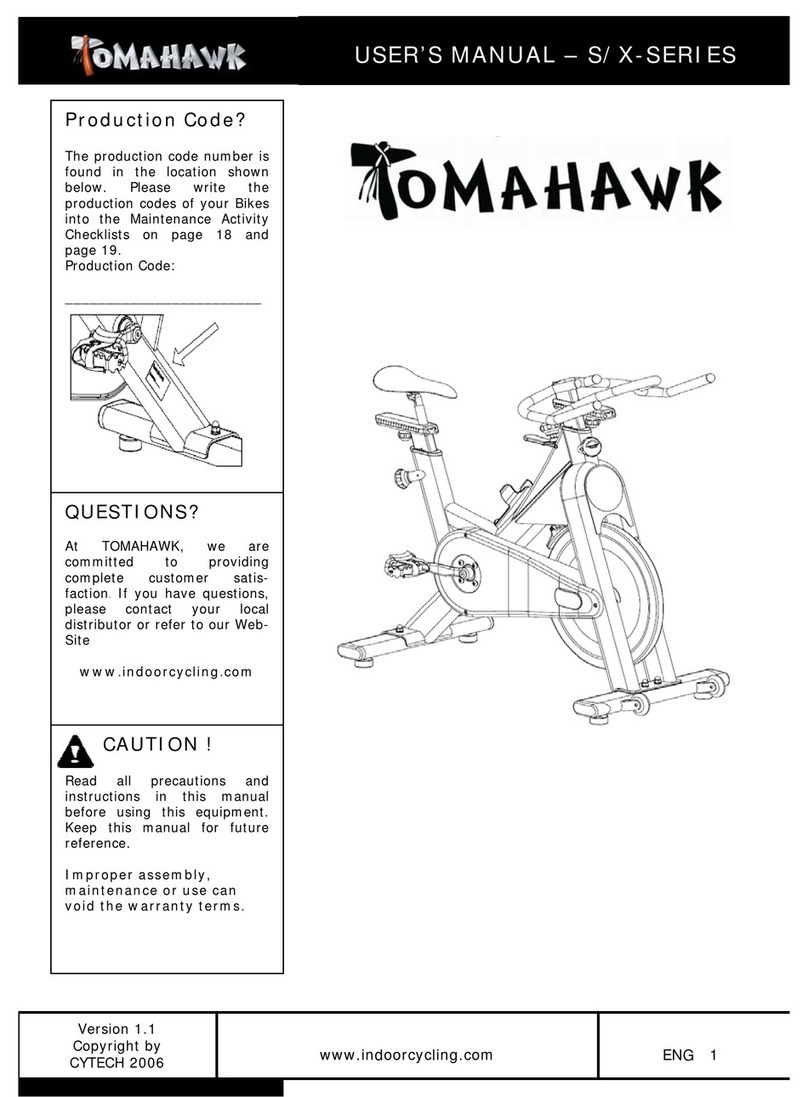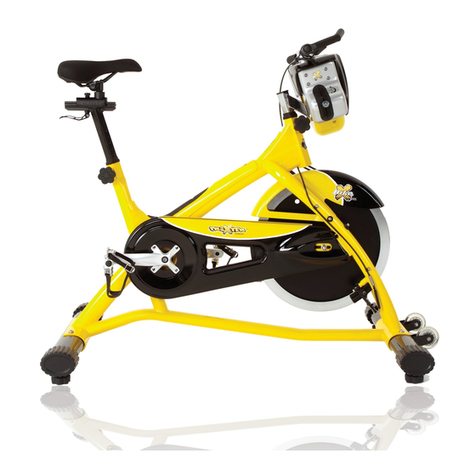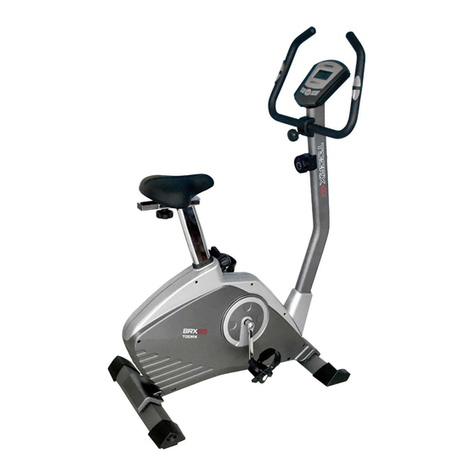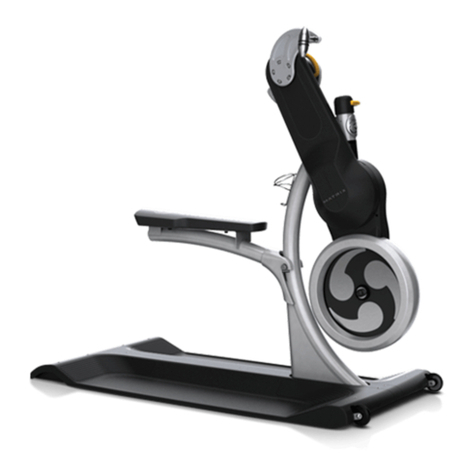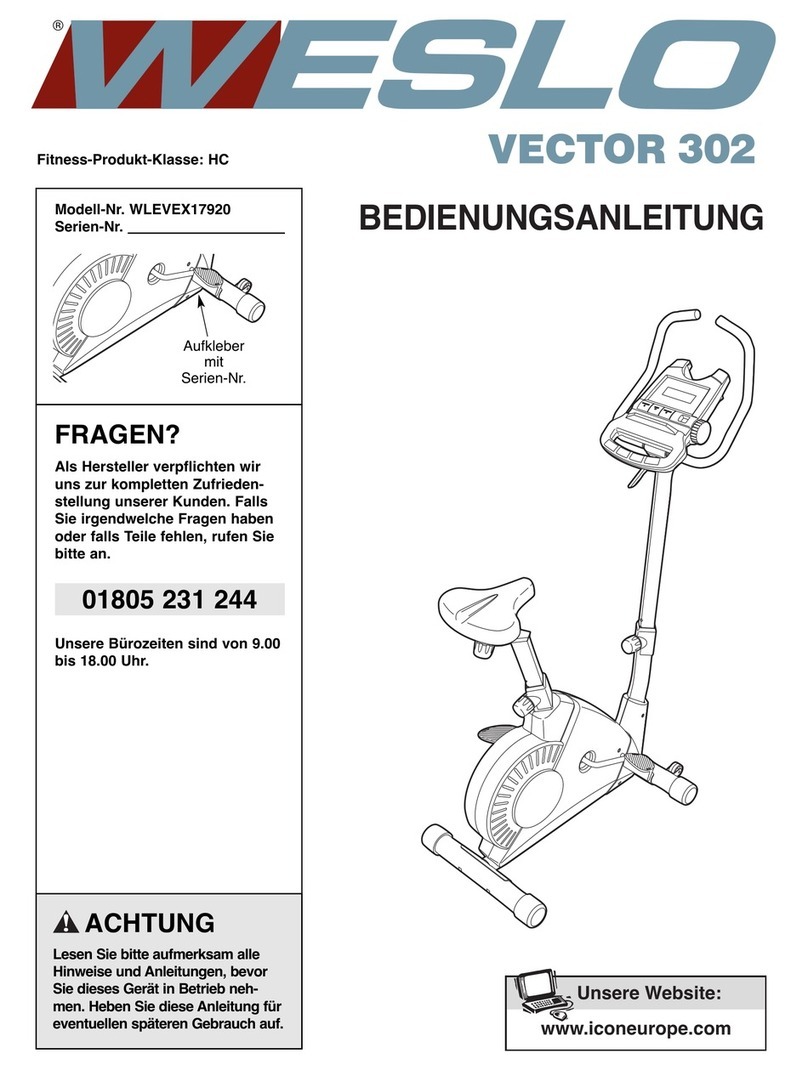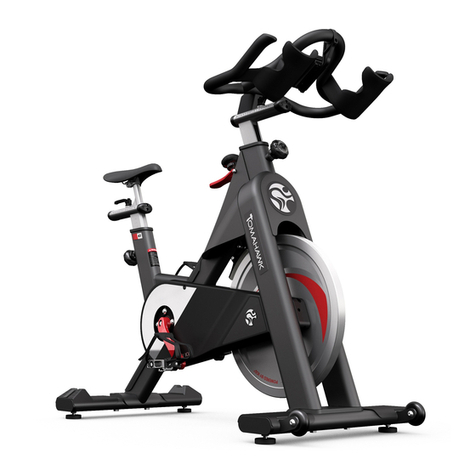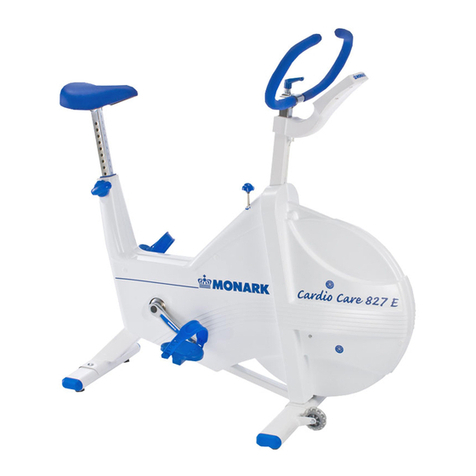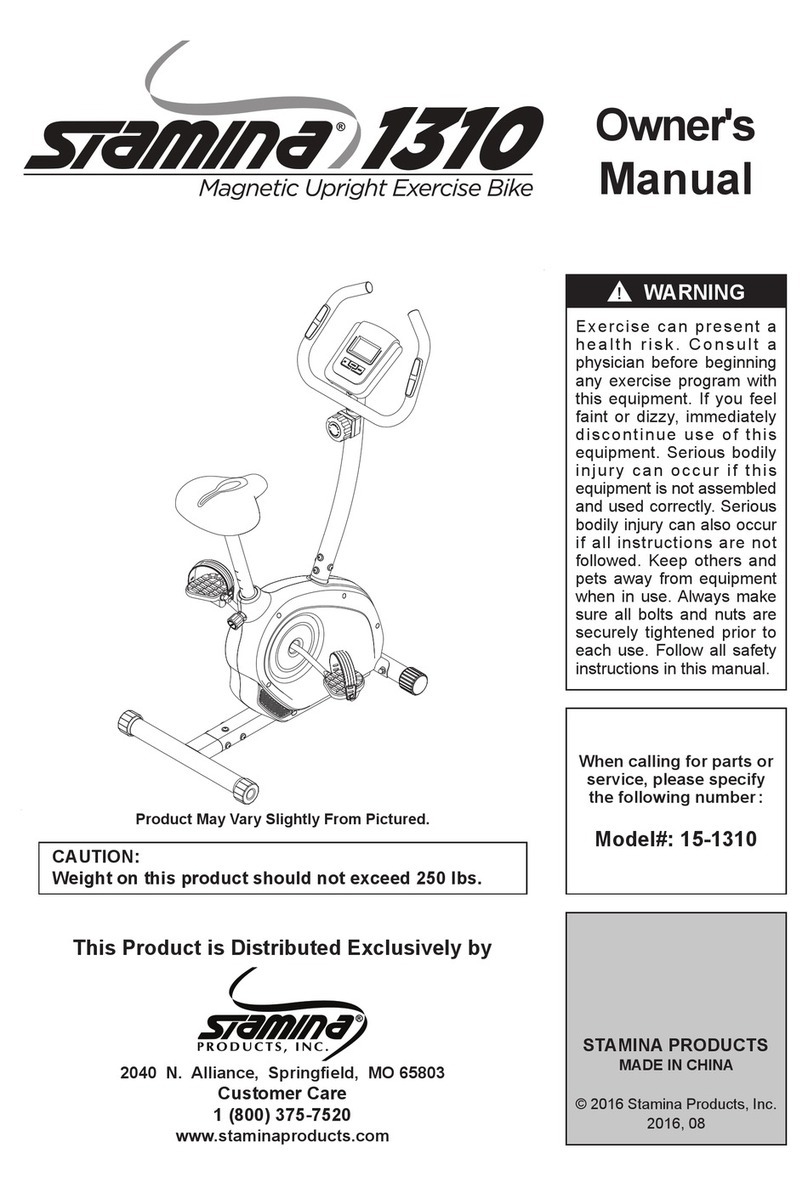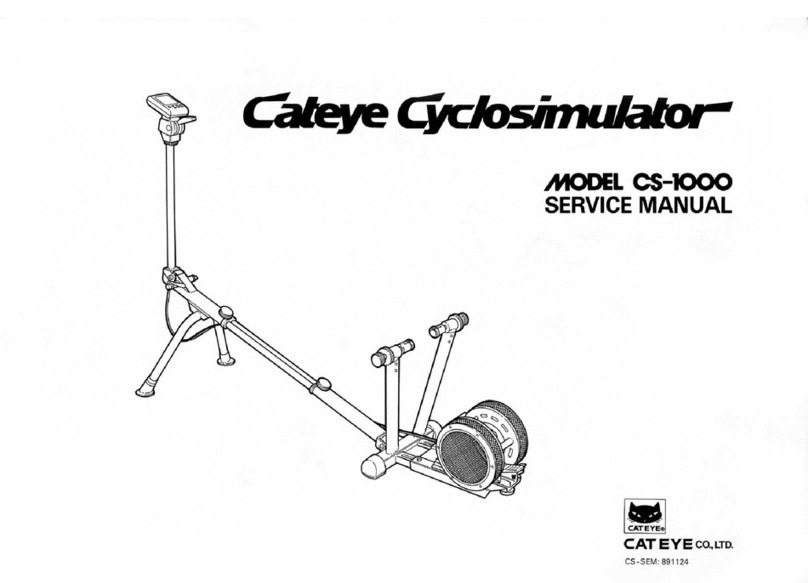
Version 1.3
Copyright by
CYTECH GmbH 2008
1. It is the sole responsibility of the
owner to ensure that all users of the
indoor cycle are informed of all
warnings and precautions by an
authorized trainer or instructor prior to
use.
2. Operate and maintain the indoor cycle
only as described in this manual and
after proper assembly and functionality
check (see page 5-10).
3. Keep the indoor cycle indoors, away
from moisture and dust. Do not place
the indoor cycle in a garage or covered
patio or near water.
5. Place the indoor cycle on a level
surface. To protect the floor or carpet
from damage, place a mat beneath the
indoor cycle. Make sure that there is
adequate room around the indoor
cycle to mount, dismount, and operate
it.
6. Regularly inspect and properly tighten
all parts of the indoor cycle as
recommended in this manual. Please
replace defective parts immediately
and do not use the bike until repair is
performed. Only use original parts
from the manufacturer
7. Children under the age of 18 should
only be allowed use of the indoor cycle
with parental approval and if guided by
a specially trained instructor.
8. The indoor cycle should not be used by
persons weighing more than 290
lbs/130 kg.
9. Always wear appropriate athletic
clothes and shoes while operating the
indoor cycle. Do not wear loose clothes
that could become caught on the
indoor cycle or shoes with loose laces.
10. Before using the indoor cycle, make
sure that you are familiar with the
setup/operation of the indoor cycle
(see pages 9-12).
11. The indoor cycle does not have an
independently moving flywheel
(wheel); the pedals will continue to
move together with the flywheel until
the flywheel stops.
12. Always regulate the flywheel
resistance so that your pedalling
motion is controlled (see page 9-12).
13. Keep your back straight while using
the indoor cycle; do not arch your
back.
14. If you feel pain or dizziness while
exercising, stop immediately, rest and
cool down and consult a physician.
15. If replacement parts are needed, use
only manufacturer supplied parts.
WARNING !
To reduce the risk of serious injury, read the following important precautions and
information before operating the indoor cycle.
WARNING:
Before beginning any exercise program, consult your physician. This is especially
important for persons over the age of 35 or persons with pre-existing health problems.
Read all instructions before using. Be aware that incorrect or extensive training may
result in serious health injuries. The manufacturer assumes no responsibility for
personal injury or property damage sustained by or through the use of this product.
